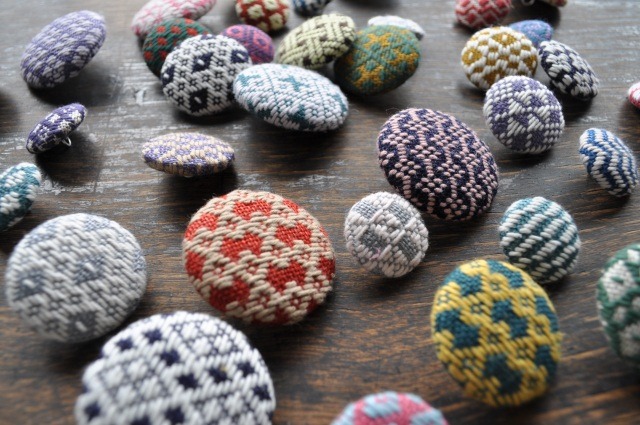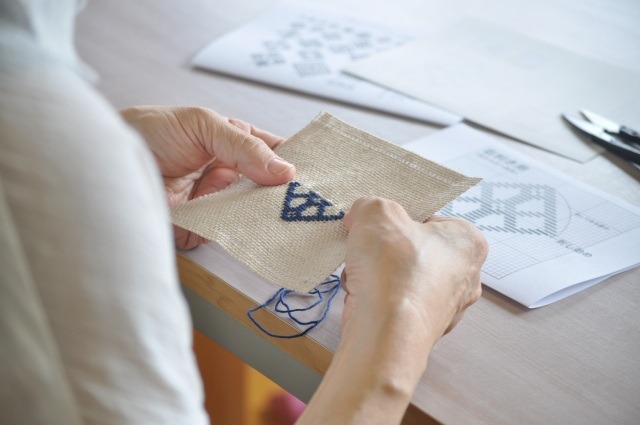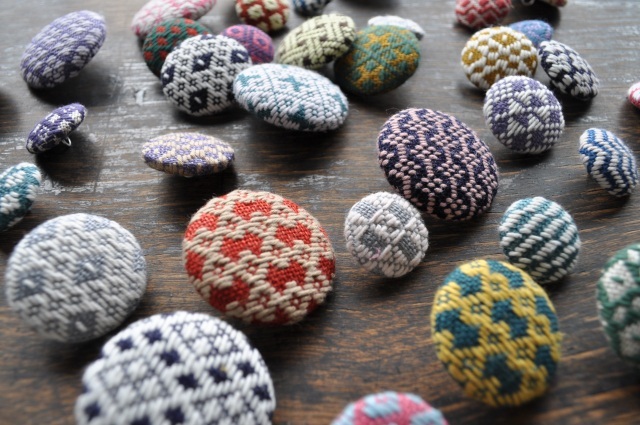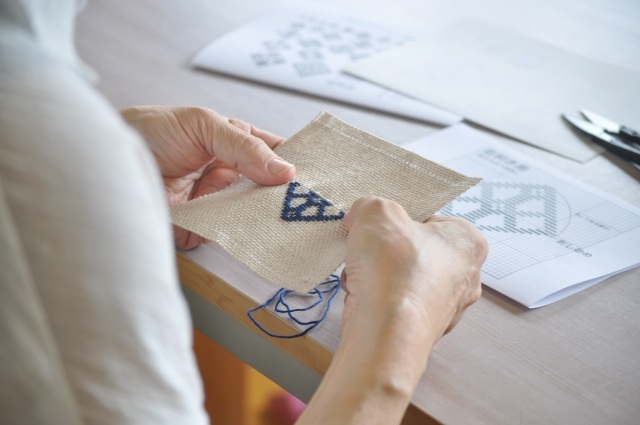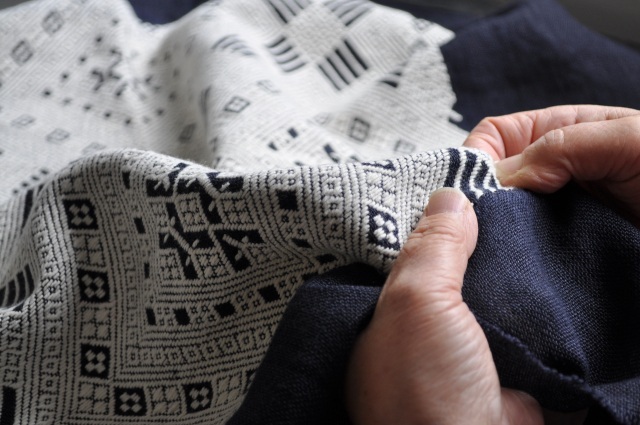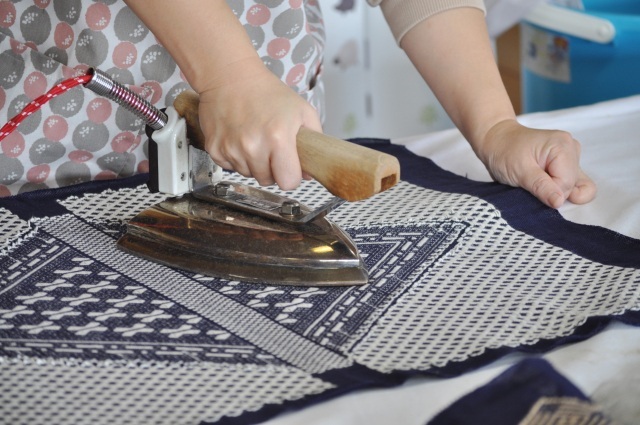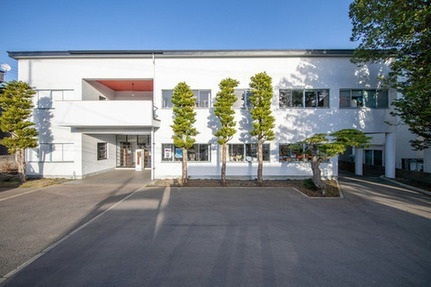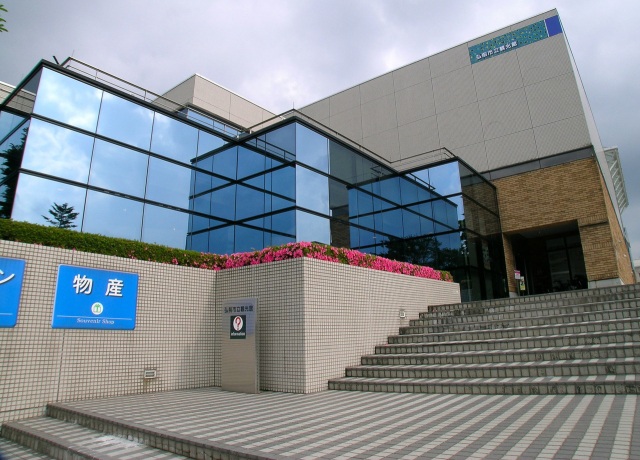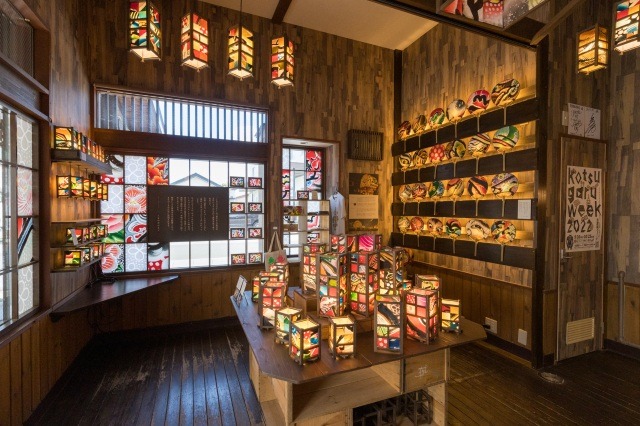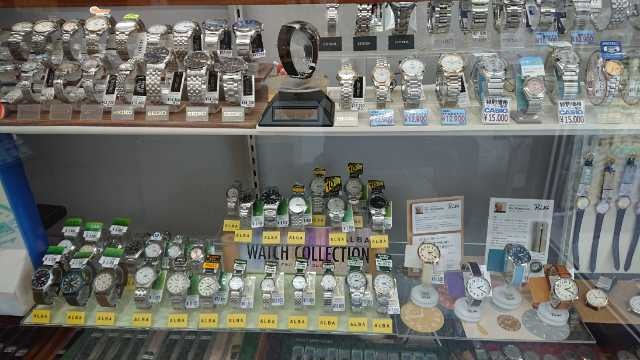Hirosaki Kogin Institute
Kogin-zashi is a kind of sashiko or traditional Japanese reinforced stitching technique born in the Tsugaru region about 300 years ago, during Japan’s Edo period. Peasants would stitch cotton threads into their coarse linen work clothes to reinforce the loose weave. A technique of creating geometric patterns by making stitches while counting the number of weaves was developed, mainly in the area around Hirosaki. There are three different styles by region: Higashi Kogin from the area east of Hirosaki, Nishi Kogin from the area to the west, and Mishima Kogin from the area to the north.
Nowadays, Kogin-zashi embroidery is no longer limited to just farmers’ work clothes. It is used to decorate a variety of items like neckties, handbags, and wallets and has become popular as a folk art.
The Hirosaki Kogin Institute is an organization dedicated to carefully preserving and authentically passing on the traditional craft of Kogin-zashi. It manufactures and sells Kogin-zashi products made with traditional materials and techniques.
Visitors can also observe artisans at work or try stitching their own Kogin-zashi coaster. (For the latter, participants who cannot speak or understand Japanese must be accompanied by an interpreter.)
Those who are interested in the hands-on experience can apply from the following website.
General Information
- Address
- 青森県弘前市在府町61
- Telephone Number
- 0172-32-0595
- Opening Times
- 9:00 a.m. to 4:30 p.m.
- Closures
- Saturdays, Sundays, and national holidays
- Prices
- Free
- Directions
- Approx. 15-minute walk from Chuo-hirosaki Station on the Konan Tetsudo Owani Line
- Car Park
- Available
- Website
- Hirosaki Kogin Institute
Basic Information
- Multilingual
Staff - Multilingual
Signs - Free Wi-Fi
- Contactless
Payments - Tax Free
- Parking Lot
- Barrier-Free
Toilet - Barrier-Free
COVID-19 Prevention
- Face Masks
Required - Sanitizing
Stations - Temperature
Checks - Physical
Distancing
